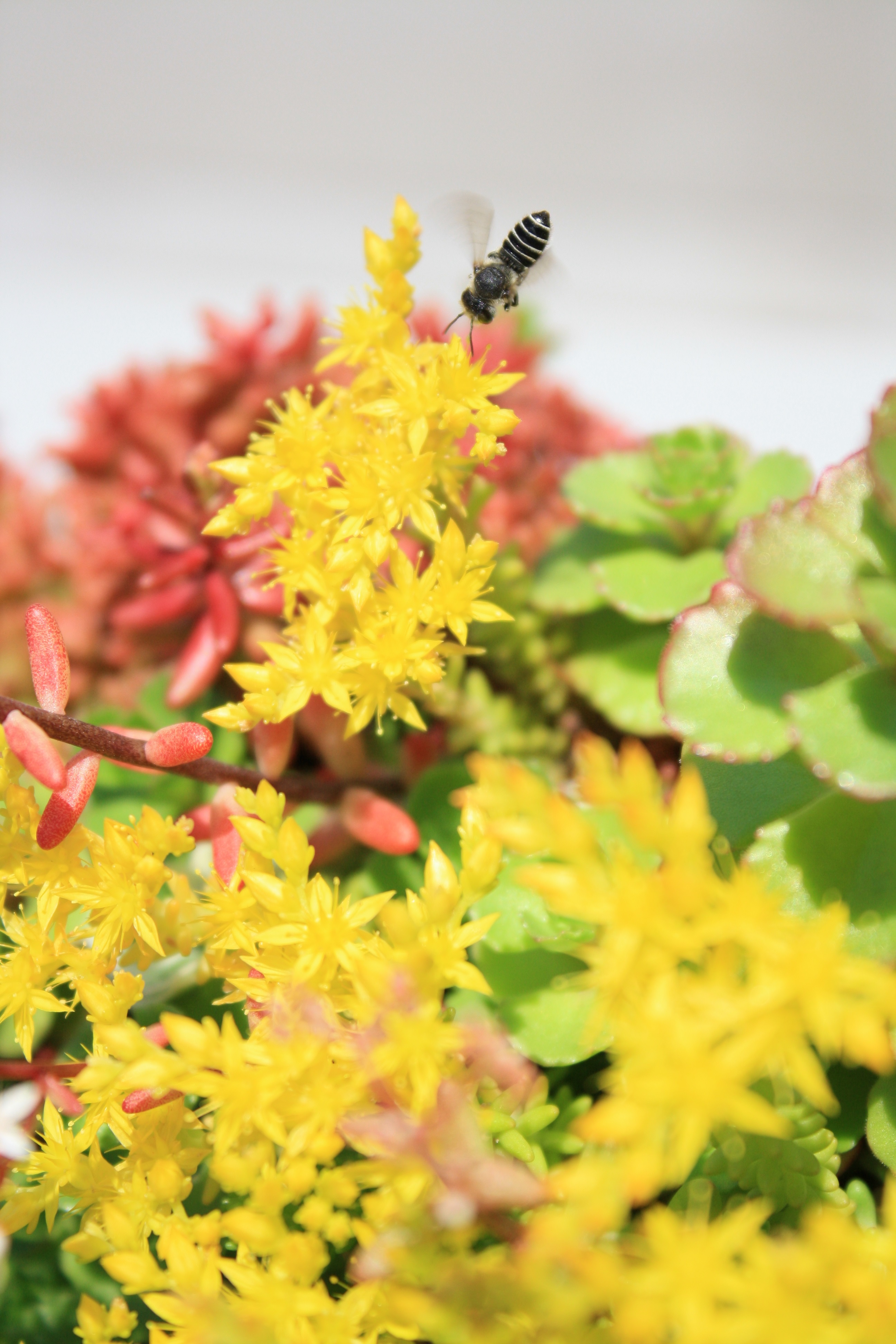
22.10.17 - Common green roof practices favour non-native bees, warn GRIT Lab researchers
Masters of Landscape Architecture student Catherine Howell, along with Assistant Professor Jennifer Drake and Associate Professor Liat Margolis, recently published an article in The Conversation describing that — with the appropriate variables — green roofs can help maintain bee populations in cities. Unfortunately, current green roof practices favour the native bee's non-native relatives. As cities sprawl “into their surroundings, fragmenting animal habitats and replacing vegetation with hard surfaces such as concrete and asphalt,” declining bee populations are an increasing concern.
As the article explains, it is becoming more understood that a green roof needs to be designed to maximize the benefits specific to its context, and the Daniels Faculty’s GRIT Lab is pioneering this research. Factors such as plant species, building height, and proximity to other habitat patches are important to consider when a green roof is designed with bee populations in mind. For example, bees will rarely visit green roofs over 8 storeys high. Additionally, while the plant species called “sedum” is currently the go-to green roof material, it only favours a small percentage of Toronto’s bee population.
“It’s important to note that roughly 92 per cent of Toronto’s bee species are native,” writes the article's authors. “So, favouring non-native plants [like sedum] can provide habitat for non-native bees over native bees, and could consequently lead to increased competition for those native bees.”
Under the supervision of Drake and Margolis, the article was a result of Howell’s summer work term as Student Lab Manager and Research Assistant at the GRIT Lab.
Said Howell on the experience:
“I was surprised by how varied green roofs can be, and how the variables (planting type, depth, soil, irrigation type) can have different outcomes. I thought it would be pretty simple, like you can spread out a mat of Sedum and call it a day. But not all green roofs are created equal and you need to figure out the location, the size, and what you want your main objective to be to design one properly. Consciously designing green roofs is incredibly important for maximum effectiveness.”
Photo, top: A wild, non-native bee forages for pollen on the green roof of the University of Toronto’s GRIT Lab.

